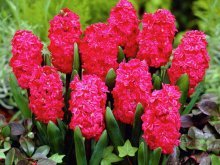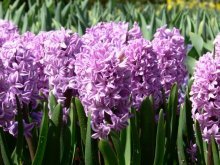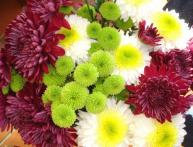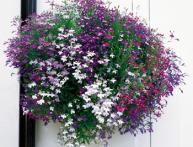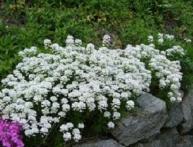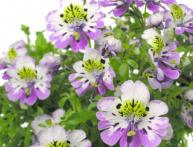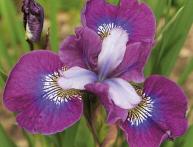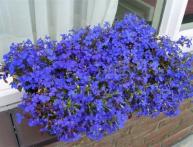Hyacinth: planting and care, features of growing in the garden and at home
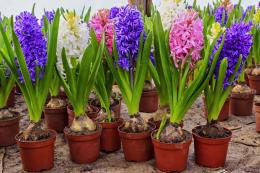
To see all the beauty of hyacinths you need to take 50 bulbs and plant them on 1 square meter. m. When they bloom, it will be impossible to take your eyes off them, and the delicate aroma can be compared with exquisite French perfumes. Hyacinth became the object of selection already in the 15th century.
Every year several new varieties are developed, the count is already in the thousands, some varieties are becoming a thing of the past, and others are taking their place. Let's try to find out what it is hyacinth, planting and caring for which is not very difficult, but requires certain knowledge and skills. To understand how to grow hyacinth, you need to learn about some of the structural features of the flower.
Content:
Description of the hyacinth plant
The genus hyacinth belongs to the Asparagus family. The most famous type is the oriental hyacinth - a bulbous herbaceous plant. The hyacinth bulb is designed so that the stem on which the flowers appear is a continuation of the greatly shortened base of the stem, that is, the bottom of the bulb.
As soon as flowering ends, the peduncle itself and all ground leaves die off. A new bud will give life to the new peduncle. It forms on an old bulb and blooms the next year. In addition to this bud, several more may form, from which small “babies” will turn out, which can be separated and after 2-3 years they will also begin to bloom.
The flowers are collected in a brush. The perianths look like funnels or bells.The ideal hyacinth has vertically directed leaves that symmetrically surround an even peduncle ending in a beautiful inflorescence. The color of hyacinths can be:
- white
- pink
- yellow
- red
- blue
- purple
Black hyacinths have already appeared. Eat varieties with simple and very large flowers, there are double and even variegated multi-colored hyacinths.
How to plant hyacinth
Planting material, its preparation and planting time
Hyacinths reproduce in two main ways - seeds and bulbs. Seed propagation is acceptable for professional gardeners. It is not advisable to use it in amateur breeding, since after sowing the seeds the plant will bloom no earlier than in the sixth year.
For outdoor cultivation, it is better to opt for medium-sized bulbs. Larger specimens are more suitable for forcing indoors. In addition, the size of the bulbs may depend on the variety. If hyacinths have yellow or double colors, then their bulbs are smaller. The bulb should be elastic with the correct proportions.
The best time to plant is autumn. Hyacinths are planted before the onset of persistent frosts. In most regions, this must be done no later than October 10. The bulb should have time to take root before the soil freezes, but should not begin to grow.
Important! Bulbs, planted in the spring, are unlikely to bloom this season. Before planting, all selected bulbs should be dipped in a fungicide solution for half an hour.
Preparing soil for hyacinth flowers
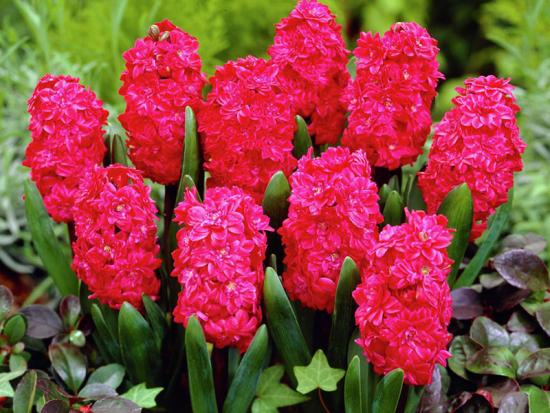
At the end of summer, the bed allocated for hyacinths needs to be dug to a depth of at least 35 - 40 cm. During digging, apply fertilizer at the rate of 1 sq. m. m:
- very well rotted humus - 10 kg
- wood ash - 0.5 kg
- superphosphate - 60 g
- potassium sulfate - 20 g
If the area has heavy clayey soil, then a couple of buckets of sand will correct the situation. Important! To prevent the growth of weeds, the bed can be covered with black covering material.
Planting hyacinths
To plant the bulbs you need to make holes. Their depth should be 3.0 - 3.5 times the size of the bulbs. If the soil is too light, a couple of centimeters are added to the depth of the holes; for heavy soils, the holes are made two cm shallower. It is advisable to pour 1-2 handfuls of sand at the bottom of the hole.
It will serve as good drainage and prevent the bulb from rotting from excess water. After this, the bulb is closed soil, and after the onset of frost, the plantings are mulched with compost. It remains to wait until spring to continue caring for hyacinths.
Caring for hyacinths in spring and summer
After the snow melts, the bed must be cleared of any remaining mulch. After which the soil is carefully loosened. Plants must be fed with nitrogen mixtures. To achieve a tall peduncle, the planting site can be covered with black, light-proof film.
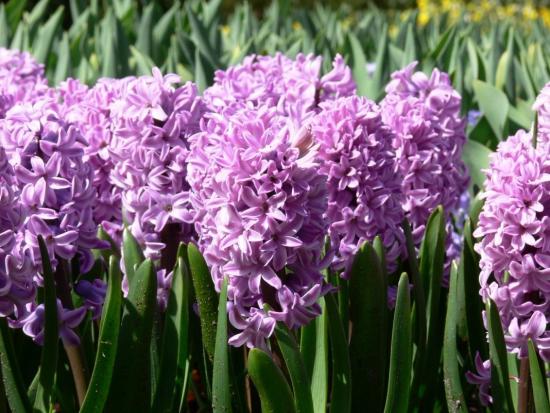
It is desirable that the flower arrow be at least 25 cm high. These are the hyacinths that look very aesthetically pleasing. Summer care for hyacinths consists primarily of removing weeds. As soon as the flowers fade, you need to cut off all the flower stalks without touching the leaves.
The leaves should dry out naturally. Until this time, hyacinths will not be prevented from fertilizing with complex fertilizers. It will have a positive effect on the health of the bulb. After the foliage has completely dried, all tops must be removed. This activity will serve as a good preventative measure against the spread of pests and diseases.
After this, the bulbs are dug up, damaged and rotten ones are removed, and healthy bulbs are dried and stored until the planting period.
Separately, it is worth mentioning about growing hyacinths indoors. Bulbs are planted in pots with soil in much the same way as in a garden bed in the fall. Before this, the bulbs are kept at a temperature no higher than + 7 + 8 degrees.
This is convenient to do in the vegetable drawer of the refrigerator. You need to keep the bulbs in it for about 10 - 12 weeks before planting. The bulb needs to be buried so that the top part sticks out a little from the soil. Then water and place in a dark place until the fragrant flowers are needed. After which the pots are exposed to light and regular watering begins.
To grow indoors, you need to take the largest bulbs; in addition, when growing in open ground You need to cut off the peduncle before flowering begins. After flowering indoors, the bulb can be planted again in open ground and after two seasons can be used again for home growing. Although hyacinths require some care, they will repay the proper care with beautiful flowers.
Video about planting hyacinths:

